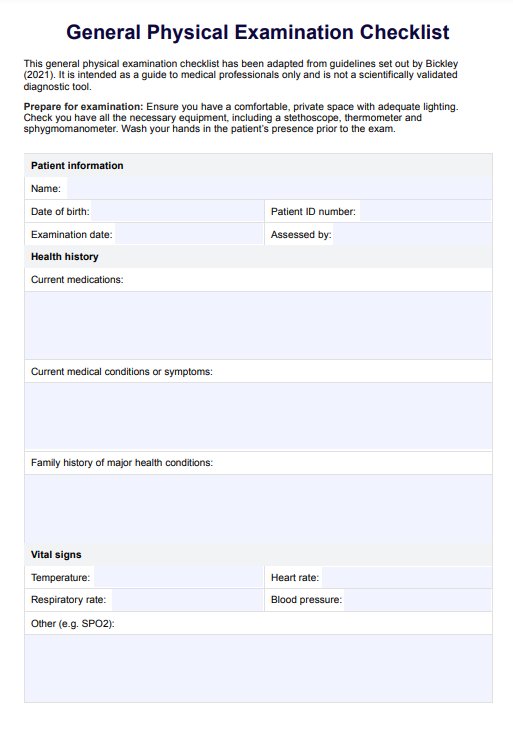A comprehensive annual physical exam checklist is a structured guide for healthcare providers during routine assessments. It ensures a systematic and thorough examination of various body systems, facilitating the detection of early signs of health issues.

General Physical Examination Checklist
Access a free General Physical Examination Checklist for your practice. Get the PDF template and streamline your processes.
General Physical Examination Checklist Template
Commonly asked questions
The checklist is designed to be flexible, allowing healthcare providers to tailor an annual physical exam based on individual factors such as age, gender, and medical history. It will enable individuals to discuss specific health concerns and symptoms, fostering a patient-centered approach.
The annual physical exam checklist incorporates health screenings, immunizations, and lifestyle counseling, emphasizing preventive healthcare. It serves as a discussion platform for nutrition, food intake, exercise, and stress management. Additionally, the checklist facilitates clear communication between patients and healthcare providers, promoting patient education and empowerment.
EHR and practice management software
Get started for free
*No credit card required
Free
$0/usd
Unlimited clients
Telehealth
1GB of storage
Client portal text
Automated billing and online payments











